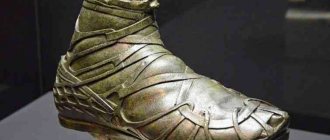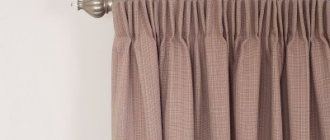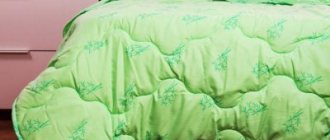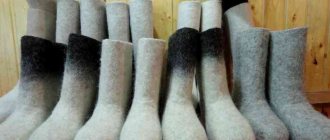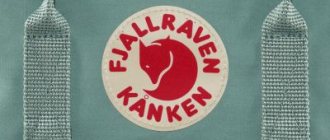A special type of sportswear, without which it is impossible to imagine martial arts training, is a kimono.
This lightweight clothing, made only from natural fabrics, does not restrict movement, is comfortable to wear and resistant to wear.
The secrets of proper washing will help you preserve the original appearance of your clothes longer. We will tell you in the article how to wash a kimono (for judo, karate) in a washing machine and by hand.
Washing secrets
You can wash a kimono either by hand or using a washing machine.
The only thing that, regardless of the choice of washing method, is necessary:
- strictly adhere to the temperature regime (no more than 40C),
- never wash white and colored kimonos together,
- Wring out sportswear as carefully as possible.
Ignoring these simple tips may cause final damage to the product.
In the washing machine
To maintain the shape and density of sportswear, it is necessary to adhere to a clear sequence of machine washing steps:
- Before loading clothes into the washing drum, get rid of stubborn dirt.
- The required temperature is set: for natural fabrics - no more than 35-40C; for sportswear made from mixed fabrics, a temperature of 40-50C is allowed.
- Powder is poured into a special compartment. For white kimonos, use liquid detergent in combination with oxygen bleach. Special powders for colored fabrics are ideal for colored sportswear.
- Set the required washing mode: delicate or synthetic.
- Spin - no more than 500 revolutions (if the kimono is made from mixed fabrics). For natural materials, machine spinning is prohibited (the function is disabled).
- The prepared clothes are carefully folded and loaded into the washing drum (the colored belt is washed separately).
- After washing, sportswear should be immediately taken out and hung to dry.
Hands
Delicate, gentle hand washing will help quickly return the kimono to purity and freshness without compromising the shape and color of the product.
Algorithm of actions:
a basin or bathtub is filled with warm water (temperature no higher than 40C), liquid detergent or powder is added;- a dirty kimono is turned inside out and immersed in a soapy solution for several hours;
- then wash the product with gentle, squeezing movements, paying special attention to the fabric on the collar, cuffs and armpits;
- the washed product is thoroughly rinsed two or three times until the soap solution is completely removed from the fabric;
- The kimono is carefully wrung out and hung out to dry.
Do I need to soak?
If sportswear is very dirty, it should be soaked before the main wash.
The colored kimono is immersed in warm water (room temperature) for one and a half to two hours. To better remove dirt, add a few tablespoons of laundry soap shavings to the water.
White sportswear is soaked for half an hour in a soda solution (2 tablespoons of soda are dissolved in 10 liters of water).
What kind of fabric is cloth and what is it used to sew?
Thick woolen or half-woolen fabric - cloth is made from fleecy yarn. The material is obtained by felting, transforming it into a compacted fabric with a felt-like coating (it covers the texture of the weave of the threads).
Clothes made of cloth
Based on the density of wool fibers, cloth is usually divided into the following categories:
- thin - made from loose, soft threads;
- semi-rough - made from semi-soft fibers;
- coarse - made from the fur of coarse-wool sheep.
The finishing method makes it possible to distinguish cloth material:
- brushed - it is distinguished by cut pile with fleece. Matter is endowed with brilliance and deep color;
- not lint-free (lint-free) – it is distinguished by its matte tonality.
Clothes such as military uniforms, coats, suits are mainly made from thick cloth; headdresses, such as hats, are also made. Fabric with the addition of synthetics, viscose, and cotton components is used for sewing workwear, sports and school suits,
How to clean a belt?
An integral part of a martial arts fighter's costume is a belt. Depending on the level of skill, a belt of a certain color is selected.
You should not ignore belt care , since a dirty element of the costume against the backdrop of a snow-white kimono spoils the overall impression of the fighter’s appearance.
The easiest way to wash a white belt is. It is placed in a special net (or pillowcase) and loaded into the drum of the washing machine along with the kimono.
Colored belts are washed according to the following scheme:
Warm water (no more than 40C) is poured into a basin and powder or liquid detergent for colored fabrics is added.- The belt is immersed in a soapy solution and left to soak for ten to fifteen minutes.
- Afterwards, the belt is thoroughly wrinkled, and if necessary, especially contaminated areas are treated with a brush and laundry soap.
- The washed belt is rinsed in clean running water and hung out to dry.
Bleaching the kimono and belt at the same time. This will help avoid a situation where individual parts of one martial arts suit differ in shade.
Washing a kimono correctly
In order to properly wash a kimono at home, without using dry cleaning services, you must first find out what material such sportswear is made from. In most cases, sports organizations, be it judo or karate, offer to sew a kimono to fit the person who will use it. In this case, you will know exactly what material the martial arts suit was made from. As for purchased kimonos, they probably have a tag with a note about the composition of the fabric.
The following recommendations will help you properly care for your kimono at home:
- be sure to study the label on the uniform before you start washing, even if the exact composition of the fabric is not indicated, remember that natural cotton is washed at a temperature of 30 degrees and no higher;
- use the shrinkage of cotton fabric to your advantage, because in this way you can easily adjust a purchased uniform to the desired size, but keep in mind that the water temperature should not be higher than 90 degrees;
- if you decide to reduce the size of a kimono by shrinking the fabric, please note that the elements of the uniform will shrink in accordance with the direction of the grain, which is not always identical for a jacket and trousers;
- the belt in a kimono is an important component that indicates the rank of a fighter; as the rank increases, the color of the element changes, so it may not match the color of the uniform, in which case the belt must be washed separately.
Many people are also interested in how often you can wash your martial arts uniform. Cotton is a fairly durable fabric, so it can be washed frequently, but you shouldn’t overdo it. Machine washing will shorten the life of the kimono, making the fabric less durable.
The process of washing a kimono is as follows:
- It is recommended to turn trousers and a jacket for martial arts training inside out before washing so as not to spoil the appearance of the kimono. You should also carefully roll the clothes into a roll that is not too tight before putting them in the washing machine drum.
- If you also decide to wash your belt and it is a different color than your uniform, place the uniform item in a fabric bag, such as a pillowcase.
- When machine washing, be sure to turn off the drying mode and set the spin speed to the minimum value. Since cotton fabric is washed at a low temperature, it may take more than an hour to remove all stains.
To reduce the frequency of washing a kimono, it is enough to wear a thin T-shirt under the uniform jacket, which will absorb sweat and other dirt. Of course, this will be difficult to do in the summer. Also, the frequency of washing sports uniforms depends on how thoroughly the room where martial arts classes take place is cleaned.
When washing uniforms, give preference to the manual method. Moreover, it is not necessary to clean your kimono after every class. If you simply rinse the cotton fabric in cold water, most of the dirt will come out on its own. Remember that when washed in a machine, the colored belt will certainly fade, which can affect the entire uniform.
How to remove various stains?
The recipe for getting rid of it depends on the type of stain itself.
- will help remove sweat stains from colored fabrics It is enough to soak the dirty item in the prepared solution and leave for half an hour. Afterwards the product is washed in the usual way.
- Hydrogen peroxide will help remove blood stains from a white It is enough to moisten the stain generously with peroxide, wait until the reaction occurs, and remove the stain with a cotton sponge.
- Laundry soap will help get rid of grass stains Rub the dirt with soap and leave it alone for ten to fifteen minutes. Afterwards the clothes are washed in the main mode.
- Hydrogen peroxide and ammonia (mix in equal proportions) will help get rid of yellow spots The resulting solution is diluted in water (3-4 spoons per 10 liters), in which the kimono is soaked. After an hour, the clothes are washed as usual.
- If a rust stain appears on a white item after washing , lemon will help remove it. You need to wrap a piece of lemon in gauze and a paper napkin, apply it to the stain and press with a hot iron.
Ironing
Many, even experienced housewives, have had bitter experiences when ironing products. To remove creases from chiffon items using a modern iron, you need to know some tricks so as not to damage the fabric.
How to iron - rules:
- Do not splash water on clothing. You can burn through the material.
- This delicate fabric cannot be steamed. Dark spots will appear. If the creases do not disappear, you can use the steam mode on the iron. This must be done through several layers of gauze and at a distance of 30 cm.
- Chiffon items are ironed wet. Completely dried items are difficult to iron.
- Do not iron directly with the metal soleplate of the iron. Line with cotton fabric that does not fade.
- Ironing is allowed at a temperature of 60–120 degrees. The mode is set to silk.
- Before starting the procedure, even through gauze or fabric, blouses and dresses are turned inside out.
By following all the listed rules, you will learn how to quickly and accurately iron chiffon items, without damaging the material.
How to return the color?
You can return the original whiteness and freshness in the following ways:
Lather the fabric with laundry soap and leave the clothes alone for two hours. The product can then be washed as usual.- Deciduous wood ash is an excellent folk remedy for bleaching natural cotton and linen.
The ash is poured into a gauze bag and placed in the drum of the washing machine along with dirty clothes. - A saline solution will help quickly restore the whiteness of a cotton kimono. In 10 liters of oxen, dissolve 2 tablespoons of salt, and place the product in the resulting solution for half an hour. Afterwards, the clothes are washed in the usual way.
- A solution of hydrogen peroxide (2 tbsp), ammonia (1 tbsp) and water (10 l) helps to cope not only with the gray tint of a washed item, but also with old stains. The kimono is immersed in the prepared solution, left for forty minutes, after which it is washed by hand or in a machine.
The basic rule that must be remembered in order to avoid final damage to the product: a kimono that has lost its whiteness cannot be bleached with products containing chlorine. The result of such actions will be an even grayer fabric of the product.
Good old boiling for bleaching
Children's white clothes, linen and home textiles, especially cotton tea towels, can be made snow-white the old fashioned way. To do this, you need to boil things over an open fire in an enamel pan for half an hour. It’s better to stock up on tongs first, because things will need to be turned over every five minutes during the boiling process.
Modern boiling can be easily done in a washing machine, using water heating to 70–90 degrees and special detergents, if the fabric allows it. Before boiling, things should be soaked for a couple of hours in a solution of laundry soap or other composition that promotes bleaching.
Pros of digestion:
- tissue disinfection;
- achieving results without the use of chlorine and aggressive agents.
You can enhance the effect of soapy boiling water using ammonia, baking soda or soda ash, and hydrogen peroxide.
A proven recipe: boiling with powder, but this method is only applicable for cotton products. The old-fashioned way to get rid of difficult stains is popular among lovers of white kitchen textiles. Things must first be soaked in a warm soda solution (at the rate of a teaspoon per liter of water), then boiled in an enamel pan with the addition of washing powder. Cooking should last half an hour, accompanied by regular stirring and turning of the tissues.
How to remove the smell?
A kimono soaked in sweat begins to smell unpleasant. One proven method will help remove the smell of sweat: just soak the clothes in water with vinegar (2 tablespoons of vinegar per 10 liters of water). After soaking, the clothes are thoroughly rinsed and hung out to dry.
The following recommendations will help minimize the appearance of unpleasant odors:
- after each workout, the kimono must be removed from the bag and laid out to dry;
- after each workout, clothes must be rinsed under running, cool water;
- Drying in the cold will help quickly get rid of the unpleasant odor of sweat, even without washing.
How to dry?
It is strictly forbidden to dry a kimono made from natural fabrics in an automatic machine, twist it too much, or stretch it. From such actions, the fabric stretches and loses its shape and original appearance.
Basic drying rules:
Immediately after machine washing, clothes must be removed from the drum and hung out to dry.
Delay can lead to the formation of creases and folds on the fabric, which will be very difficult to get rid of. Also, leaving a damp kimono in the washing machine for a long time can cause a very unpleasant, musty odor to appear, which can only be removed by repeated washing.- Wet clothes are gently shaken and hung out to dry in the open air, in a dark, well-ventilated place.
- It is forbidden to dry a kimono on a radiator or near an open fire.
Sportswear made from natural fabrics takes a long time to dry, so you should be patient and have a second set of replacement uniforms for training.
Adviсe
Recommendations for caring for the product are as follows:
- It is strictly forbidden to wash kimonos in hot water. When exposed to high temperatures, the product may shrink in size.
- Adding conditioner to the water during rinsing will help make the fabric soft and pleasant to the touch.
- Do not soak a kimono in hot water. Under the influence of high temperatures, dirt is further absorbed into the fibers of the fabric, and sportswear takes on a gray tint and a washed-out appearance.
- Regardless of the composition of the fabric, automatic drying for kimonos is not acceptable.
You will find maximum useful information about washing clothes and various fabric products here.

